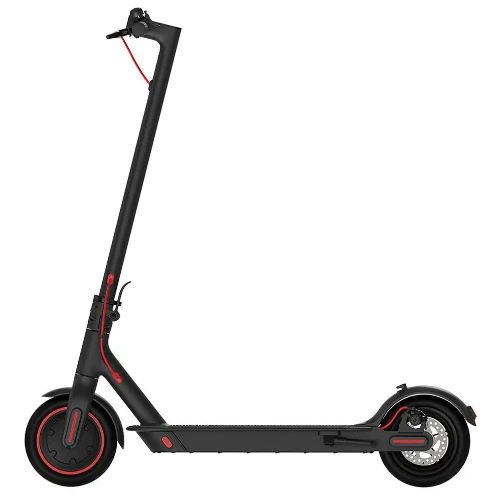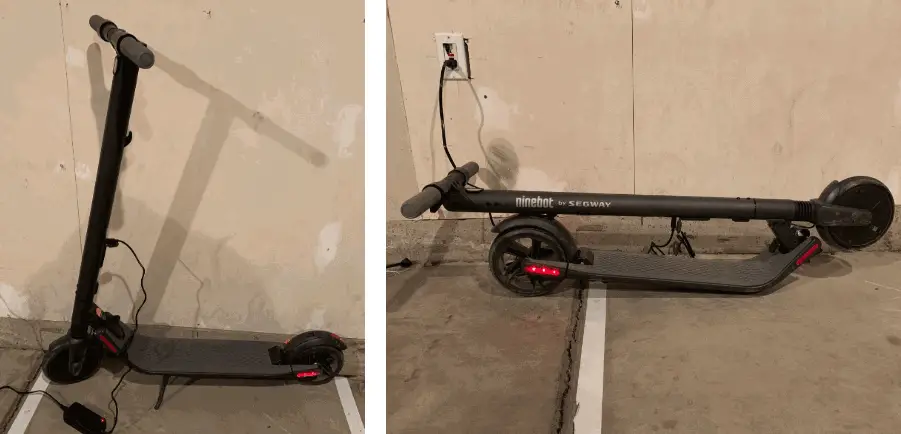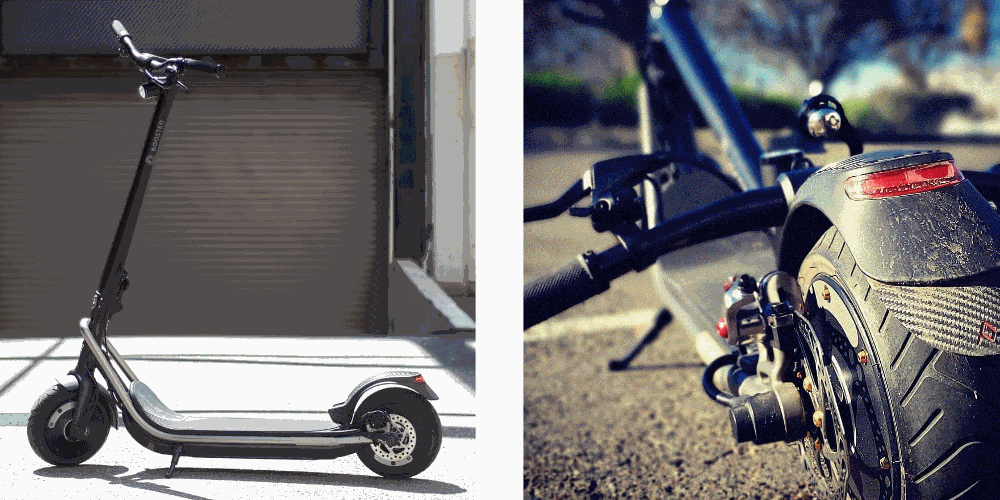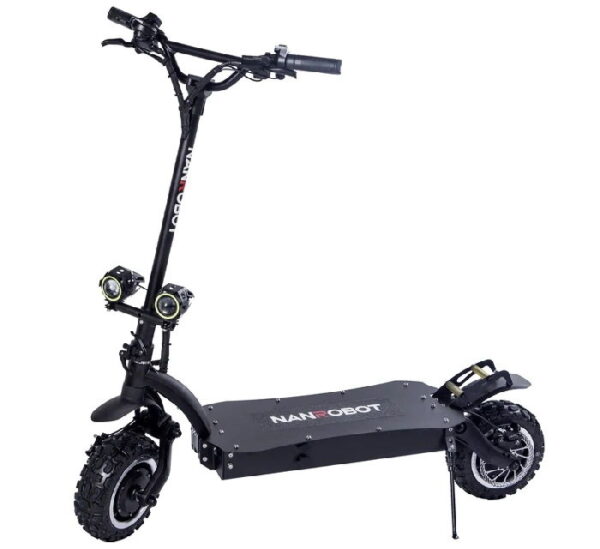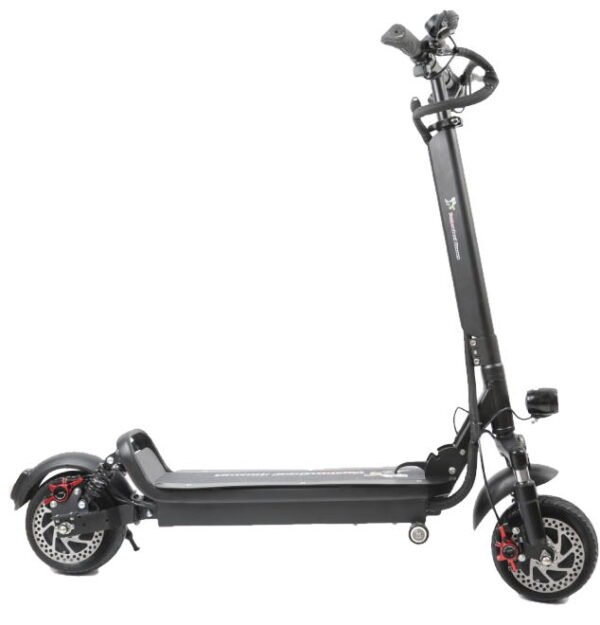Apollo City Review
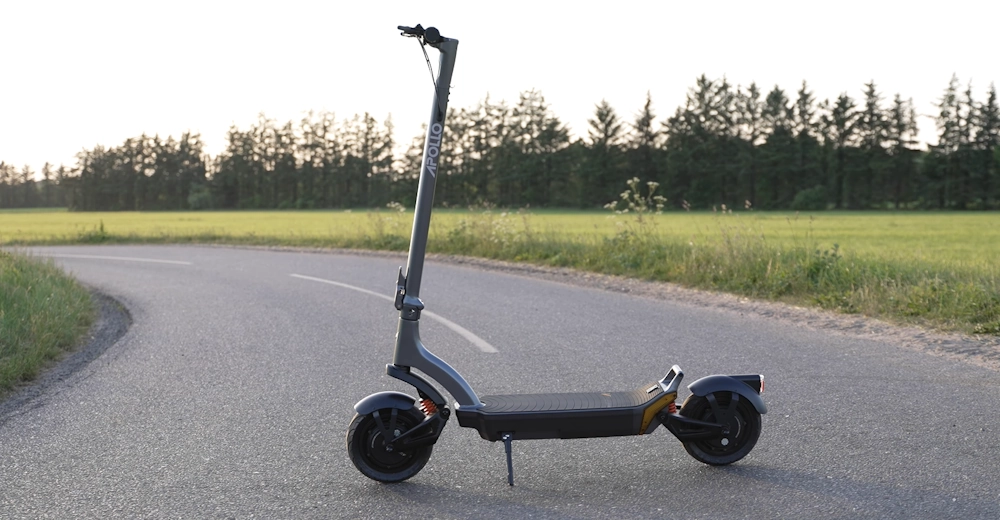
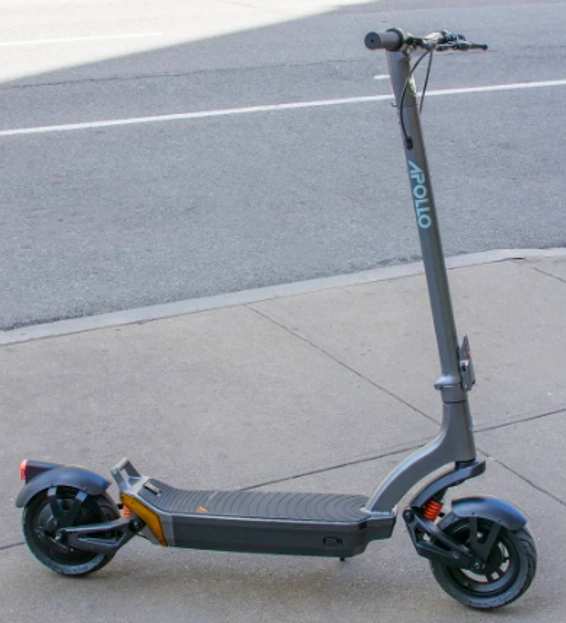
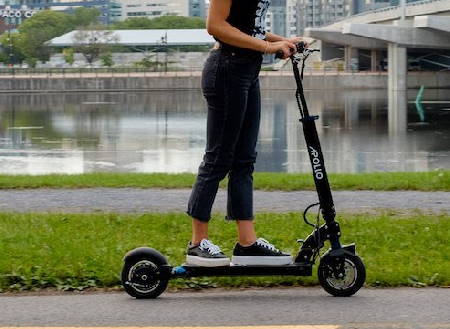

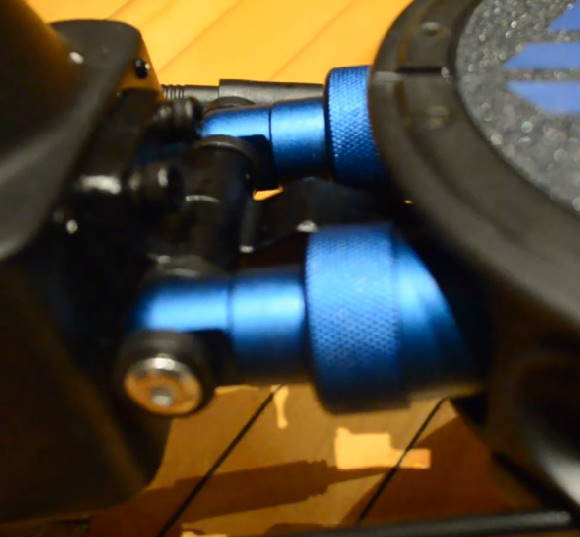
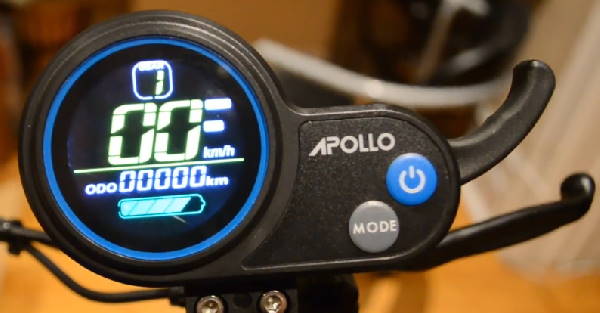
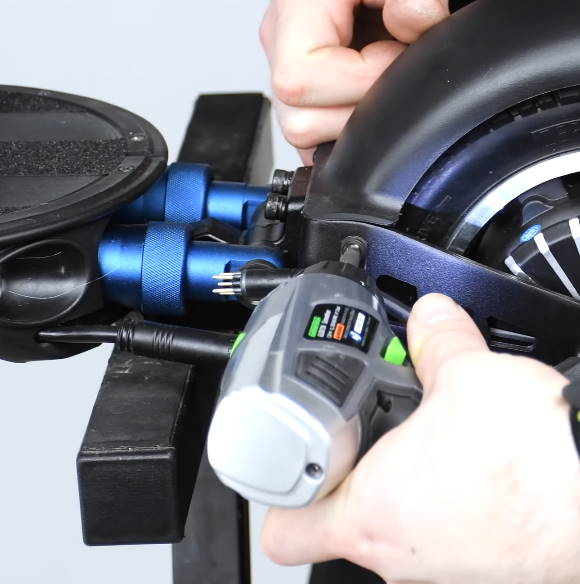
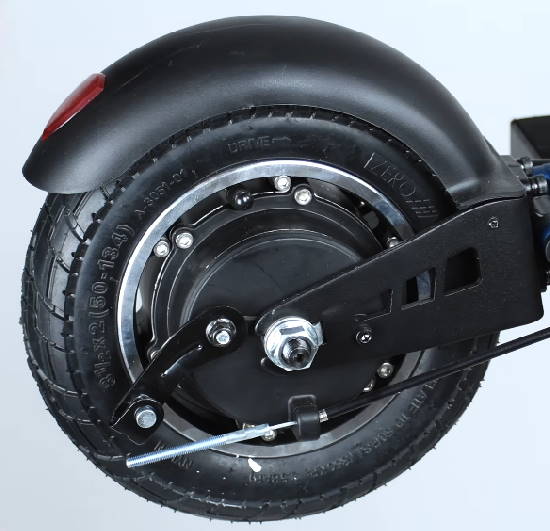
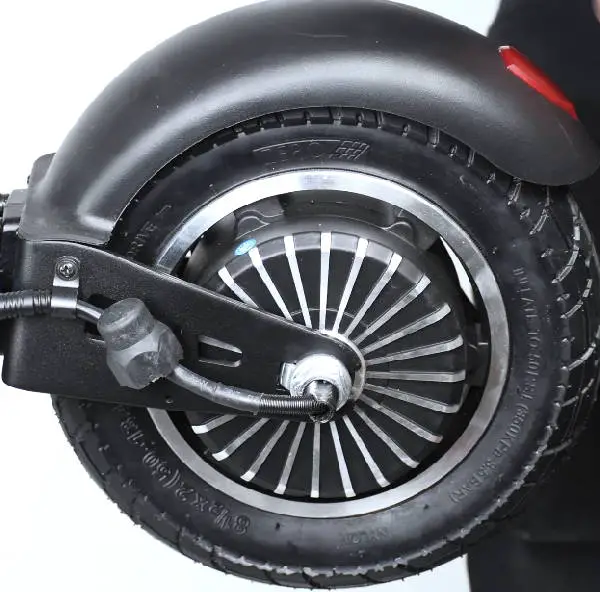
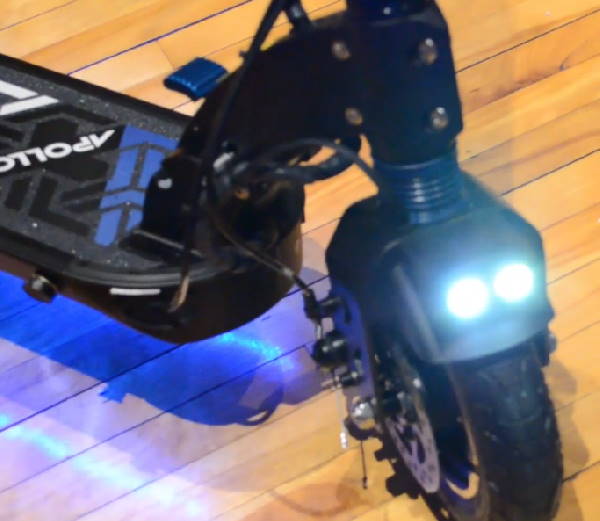
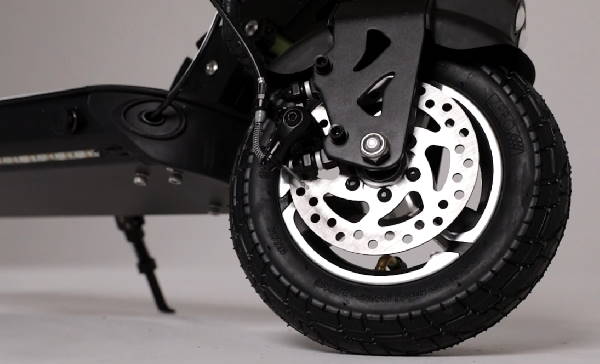
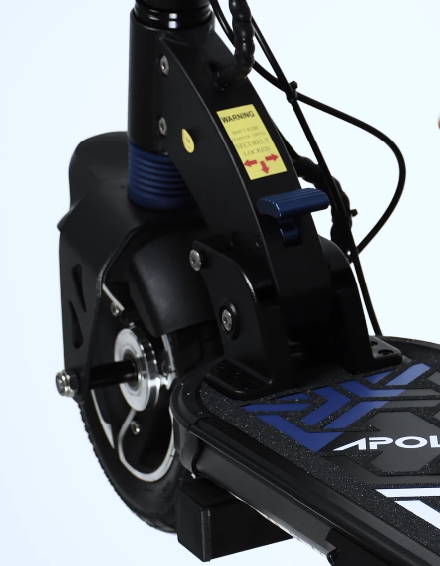

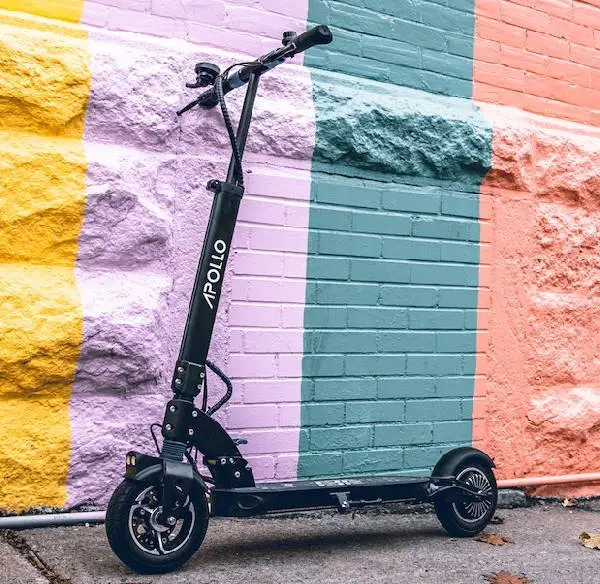
Apollo City Specifications
- Top speed: 40 kmh 25 mph
- Range: 45 km 28 mph
- Motors: rear hub BLDC
- Power: 600 W real, 800 W peak
- Climb angle: 15 °
- Battery: 634 Wh, 48 V
- Battery type: Dynavolt smart BMS
- Charging time: 8 h
- Avg. charging cost: US: $0.1, Canada: $0.06, UK: £0.2, EU: €0.19
- Ingress protection (IP): IP54
- Weight: 17.7 kg 39 lbs
- Weight limit: 120 kg 265 lbs
- Tire size: 8.5 in
- Tire type: pneumatic
- Tire pressure: 50 psi
- Foldable: yes
- Foldable handlebars: yes
- Build material: forged aluminium
- Terrains: streets, bike lanes, sidewalks, trails
- Brakes: rear drum + front disc + electronic
- Shock absorbers: front spring + rear dual spring
- Lights: two headlights + front LED strip + deck LED strips + rear brake
- Control: Apollo LED screen
- Speed modes: 3
- Cruise control: yes
- App: no
- Warranty: 12 months
- Rider age: 18-60
- Folded dimensions (L * W * H): 105 * 19.5 * 35.4 cm 41.34 * 7.68 * 13.94 in
- Adjustable handlebar: yes
Tests and measurements
- Speed tests (EScooterNerds): 40 kmh 25 mph
- Speed tests (third party): 39/40 kmh 24/25 mph
- Range tests (EScooterNerds): 42 km 26 mi
- Range tests (third party): 45 km 28 mi
- Climb tests (EScooterNerds): 15
- Climb tests (third party): 15
- Weight limit tests (EScooterNerds): 90 kg 198 lbs
- Weight limit tests (third party): 100/110 kg 220/243 lbs
- Waterproofing tests (EScooterNerds): no issues in rain or snow
- Waterproofing tests (third party): no issues in light rain
Ratings and scores
Pros
- very good quality
- great value for money
- great balance of features and performance
- great brakes
- good suspension
Cons
- grip tape on the deck might peel off
- flats are possible (not too common)
- might be slow for some (although it’s not supposed to be a fast scooter)
When to buy
If your budget is around $1000, and you are simply looking for the best scooter $1000 can buy, then I would almost instantly recommend this scooter, both as your first scooter and as an upgrade to your previous budget model. Its level of quality is just brilliant. The only type of scooterist that should strongly consider a different model is someone looking for a super-fast scooter, a scooter with a very long range, or an off-road scooter. Everyone else will never look back on buying this scooter. I believe that, at this moment, this is the best electric scooter under $1000, and it’s almost impossible to make a mistake with it.
When not to buy
The Apollo City falls short for off-road enthusiasts with its smooth tires and lightweight frame, struggling on potholes and hills. Its range is solid, but not super-long.
In this detailed hands-on Apollo City review and test, I will go over my experience with it, and we will see why this scooter rose through the ranks so quickly, and became one of the most popular models in the mid-price range, despite facing heavy competition.
Basics
I’ll just go ahead and say it – I found the Apollo City to be a truly excellent versatile scooter, and I would recommend it to most people who are looking for the best scooter in the $1000 price range.
It felt like it provided the perfect mix of quality, ride smoothness, safety, and balanced performance.
The Apollo City suits various scooter owners, from urban commuters to scooter enthusiasts. It’s user-friendly, easy to set up, and perfect for immediate riding enjoyment.
Unboxing

The scooter arrives in a plain brown box, and is protected by styrofoam and nylon covers.
The box will contain:
- scooter
- charger
- Allen multikey
- user manual
- warranty card
Assembly
The scooter arrives in one part, so the only assembly you will have to do is unfold it, and tighten all the screws around the cockpit. Also, before you ride, make sure that the tires are inflated and the battery is full.
User manual
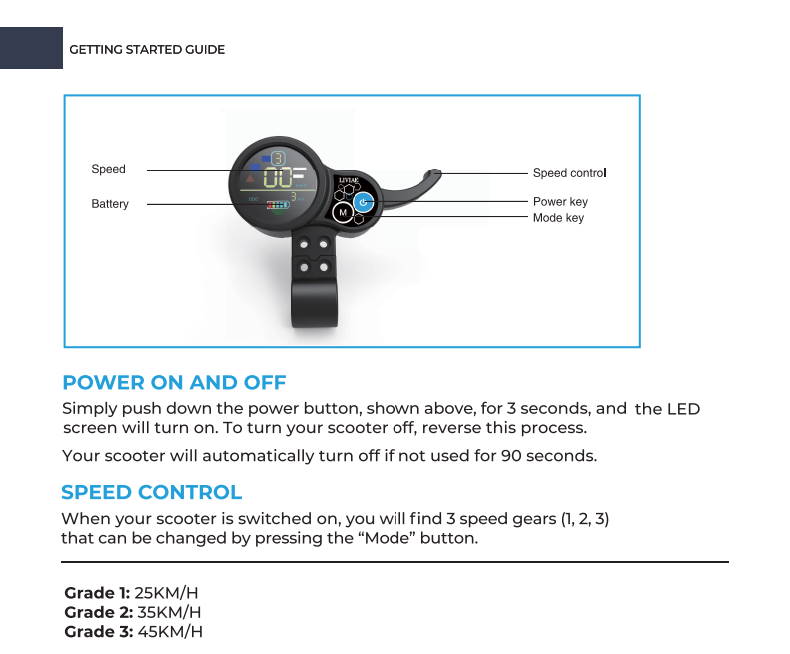
You will find the Apollo City manual to be clear, detailed, with useful illustrations, but also not longer than needed.
I strongly recommend going through it at least briefly, as it may have instructions and details that are specific to your version of the scooter that are not available elsewhere.
How to fold and unfold

The Apollo City’s folding mechanism is both safe and simple, taking just a few seconds. To fold, press the blue latch on the deck and push the stem down until it locks.
To unfold, reverse the process using both hands. The scooter folds at the handlebars, reducing its width and overall space.
The adjustable handlebar height accommodates various rider heights, including tall individuals.
Performance
The Apollo City provides balanced but still decent performance. It is far from an off-road or a racing scooter, but for its intended purpose and use cases, it has plenty of power.
Motor

The Apollo City is powered by a hub BLDC motor with 600 Watts of real power and 800 Watts of peak power.
The motor is situated in the rear wheel, which provides better torque and power efficiency.
Speed and speed test
The official top speed of the Apollo City is 25 mph / 40 kmh, and I was able to reach it without any issues. That is also what most owners report obtaining in everyday usage, except for heavier riders who are close to or above the weight limit.
Some lighter riders even report getting higher top speeds than the maximum (28 mph / 45 kmh is the highest reported top speed).
The scooter has 3 speed modes that limit the top speed:
- 1 – 15 mph / 25 kmh
- 2 – 22 mph / 35 kmh
- 3 – 25 mph / 40 kmh (maximum top speed)
The scooter will take about 4 seconds to reach the speed of 15 mph / 25 kmh, and around 9 seconds to get close to the top speed.
If this speed isn’t enough for you speed junkies out there, check out my guide on the fastest electric scooters.
Range and range test
One of my favorite things about the Apollo brand is that they always report the real-world range for their scooters and not the ideal range that can only be obtained in ideal, unrealistic conditions (like very light riders, straight and flat roads, riding on the slowest speed, etc).
When riding in the eco mode, you will get the full range this scooter is able to deliver, which is 28 mi / 45 km. If you ride a bit faster, you will still get 22 mi / 35 km.
I was able to confirm these claims in my range tests.
Since this is a very popular scooter, there have been many range tests, most of them confirming the advertised range, and one of them even claiming that the scooter was able to last for 30 mi / 48 km.
If this range isn’t enough for your daily commutes, check out my guide on the best long-range electric scooters.
Climbing and climb test
As a rear-drive scooter, the Apollo City will have better torque and climb better than other single-drive scooters that have the motor in the front.
The official climb angle of the scooter is 15° / 27%. From what I was able to observe during my tests, that climb angle is accurate, if not a bit under-reported.
This means, that most of the hills and slopes you encounter in a typical ride in a city that’s not too hilly, will not be a problem for the Apollo City.
If you are into climbing mountains, check out my guide on the best climbing electric scooters.
Ride experience

With pneumatic tires, dual suspension, and great build quality, the Apollo City provided me with one of the smoothest, safest rides out of all the scooters in the $1000 price range I’ve ever tried.
The Apollo City stands above budget commuter scooters in my opinion, offering a superior day-to-day experience.
It has range for most commutes and excellent portability, it’s versatile for casual rides, grocery runs, and daily tasks.
Ideal for urban use, the Apollo City excels in city environments. While somewhat capable for off-road, its small tire size makes such rides unpleasant and I wouldn’t suggest it.
Apollo City vs other electric scooters
The Apollo City is one of the most popular electric scooters today, and arguably the best electric scooter under $1000. Naturally, it has a lot of challengers that want to take away its championship belt, both within the Apollo family and outside it.
Apollo City vs Zero 9
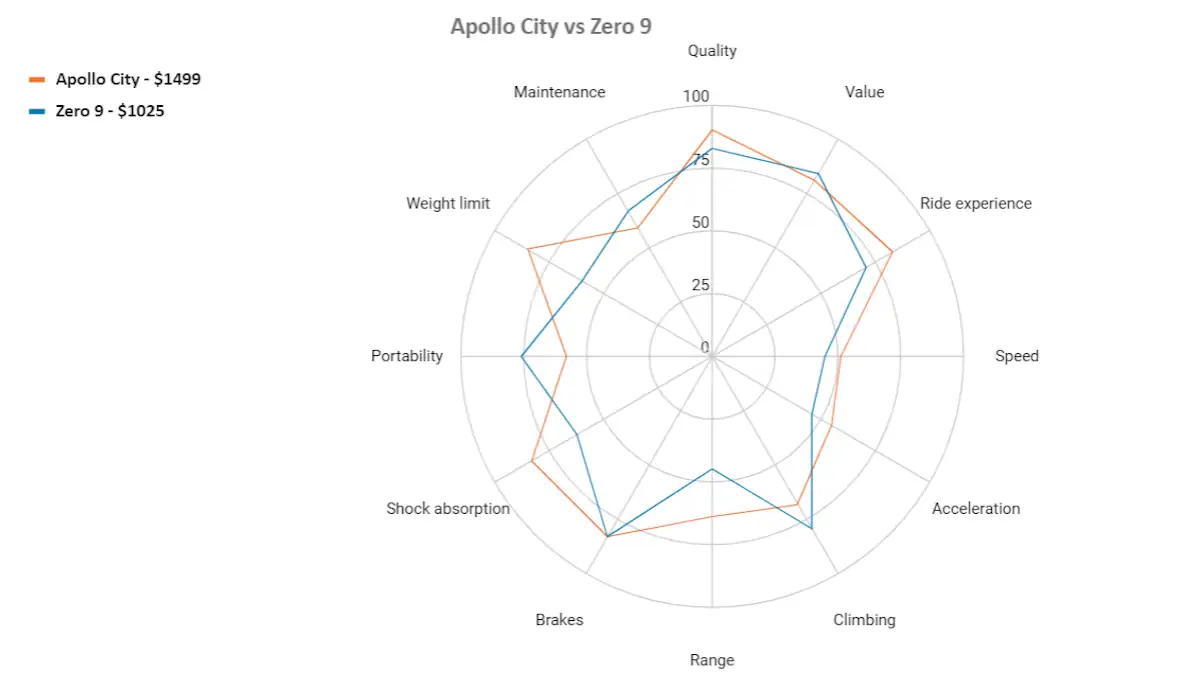
Compare the Apollo City directly to its inspiration, the Zero 9. Their specs are nearly identical, although the Zero 9 claims a stronger motor on paper, it doesn’t necessarily translate to better performance.
The Apollo City is generally slightly more affordable due to a smaller markup. Given their similarity, the choice between the two comes down to personal preference.
I would go with the Apollo City here, probably without even thinking too much. The reputation of Apollo as a brand is simply too good to be ignored, and the superior customer care and warranty policy you get with them make all the difference.
Apollo City vs Ninebot Max
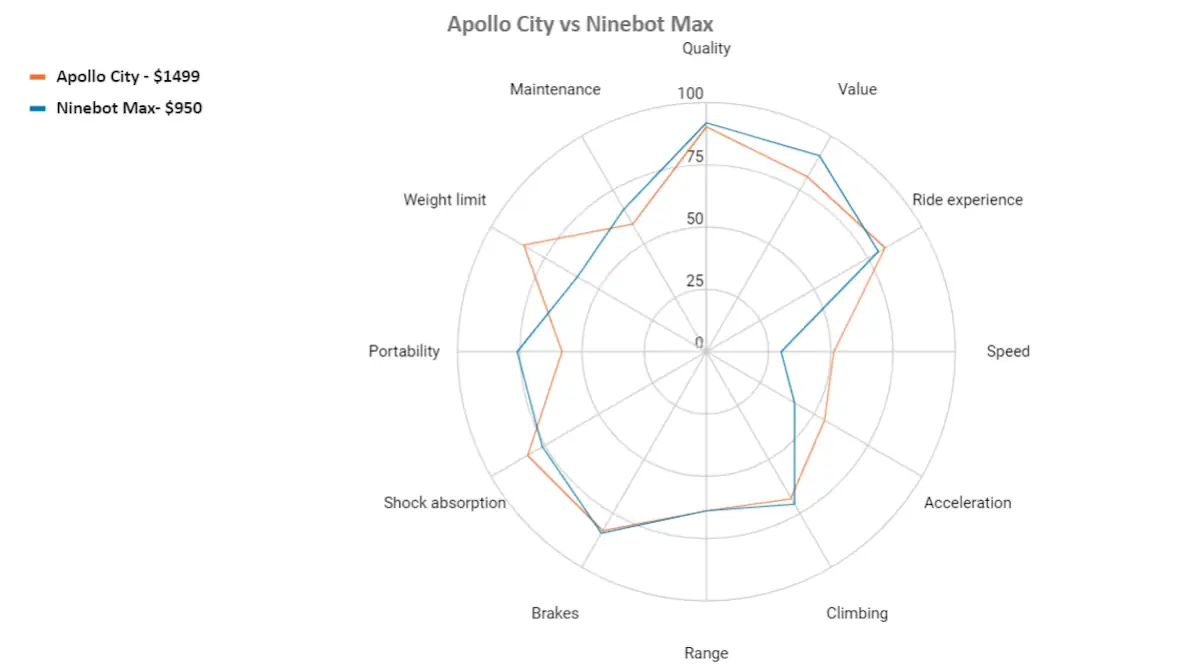
One comparison I often see is comparing the Apollo City against the Ninebot Max. I kinda like this comparison, and I believe it makes sense, even though these two scooters are kind of in a different category.
To put it simply, stick with the Apollo City if you want a more premium, higher-quality scooter, with better motor power, higher top speed, a better climb angle, and more weight limit, all of that while having a lighter and more compact scooter.
If, on the other hand, you want some extra range or better water protection, check out my complete review of the Ninebot Max.
Apollo City vs EMove Touring
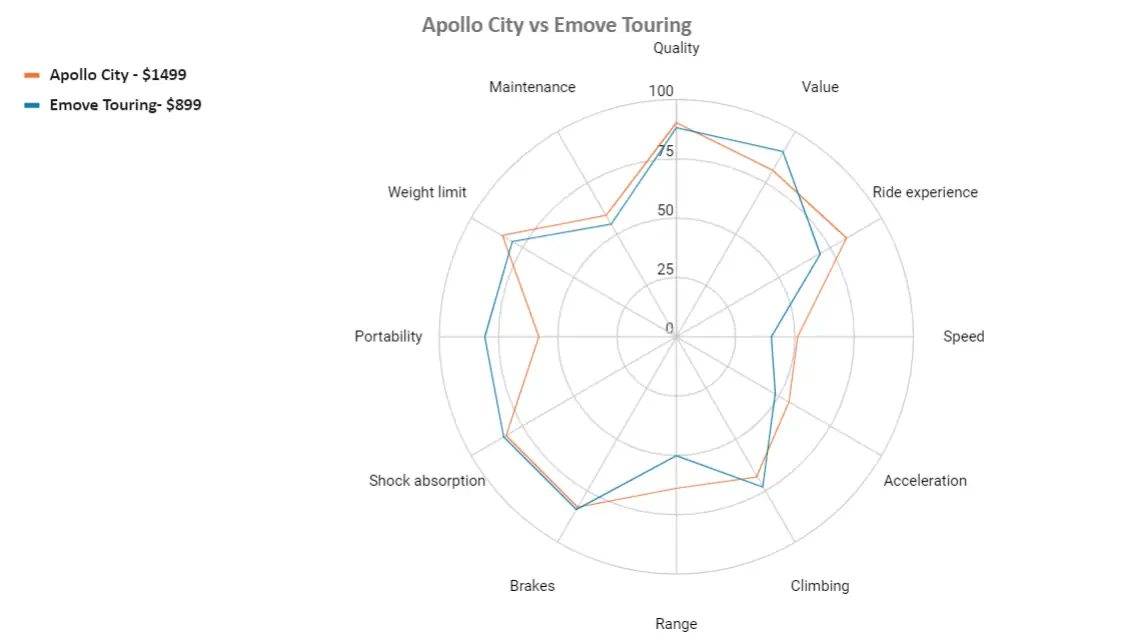
The EMove Touring, in my opinion, is a scooter that can seriously challenge the Apollo City for the $1000 throne. However, it’s just not quite there yet, and maybe its next iteration will do a better job of securing the throne.
The Touring is typically $100 cheaper, but sacrifices range and motor power, affecting climbing ability. Specs are mostly comparable, with notable differences in tires and brakes.
The Touring’s 8-inch tires, especially its solid rear tire, impact ride quality.
Additionally, it has only a rear brake, unlike the dual brakes of the Apollo City.
I would stay with the Apollo City here. If you want to save some money, however, you can check out my complete EMove Touring review.
Apollo City vs Apollo Explore
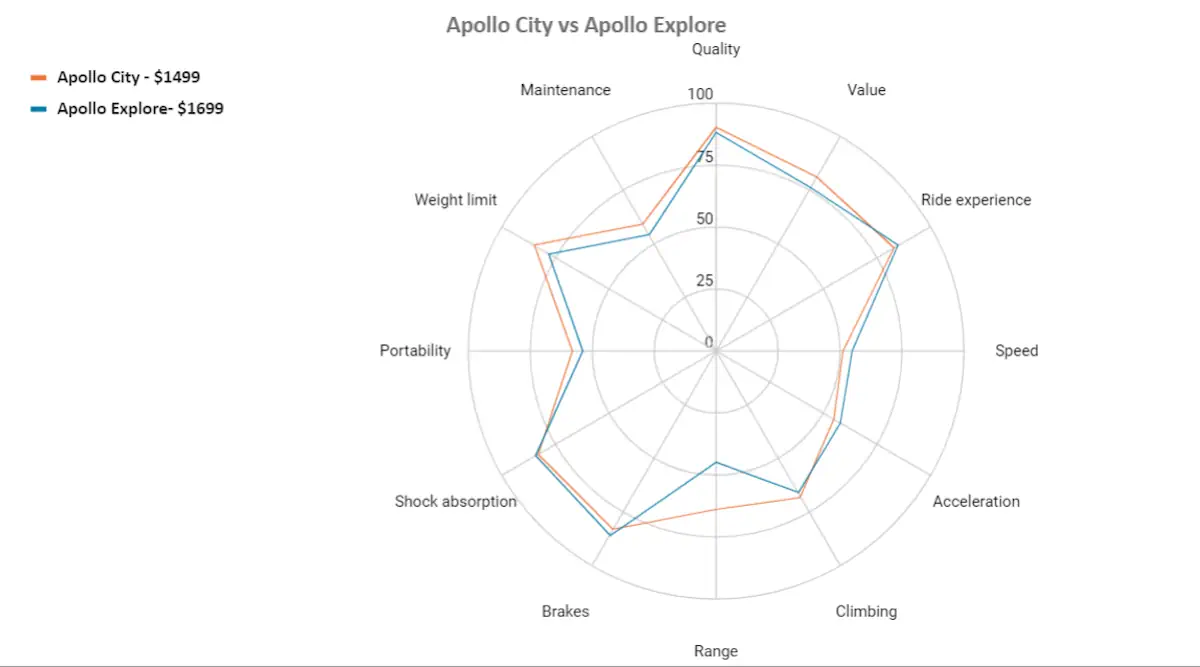
This is probably the biggest case of sibling rivalry in the history of electric scooter comparisons. Many people often pit these two scooters against each other.
Personally, however, I don’t believe they are in the same category, and each of them is best for a certain type of scooterist.
The City is lighter and cheaper, making it a better choice for typical commuters. The Explore offers more range and power, suitable for those seeking a next-level scooter.
I would recommend the Apollo City to most people, especially at this point, because it’s quite cheaper, and the differences in performance are not really that great. If you still want to check out some with a bit more juice, see my full review of the Apollo Explore, or head over to the Apollo Explore listing.
Apollo City vs Apollo Ghost
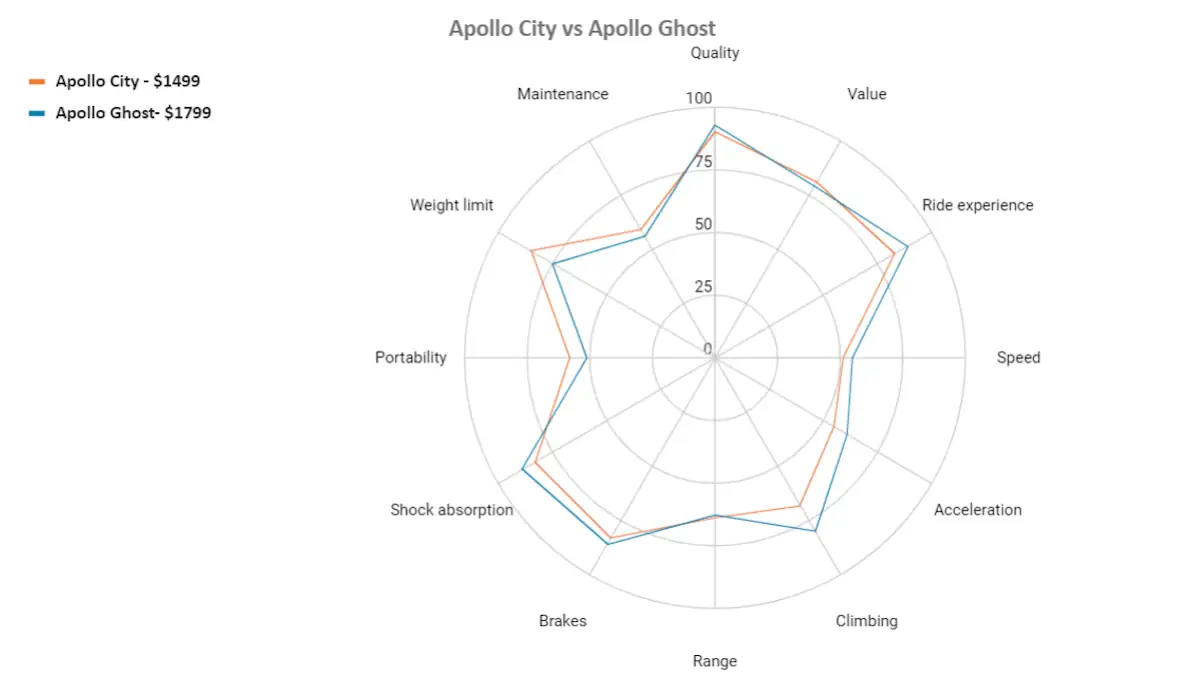
Again, this is another comparison between two Apollo models that I believe doesn’t really make much sense.
In fact, it makes even less sense than the previous one, since the Ghost is already a big, strong, power scooter, that costs 50% more than the City, and is aimed at a completely different audience.
The Ghost is not meant for commuters at all, as it’s practically a lower-tier power scooter that has quite a lot of range and speed at the same time.
Simply put, if you’re looking for a casual, regular, everyday commuter scooter, stick with the Apollo City. If, on the other hand, you want that adrenaline rush as you hit the throttle and feel the proverbial kick, then check out the Apollo Ghost.
Apollo City vs Apollo City 2022
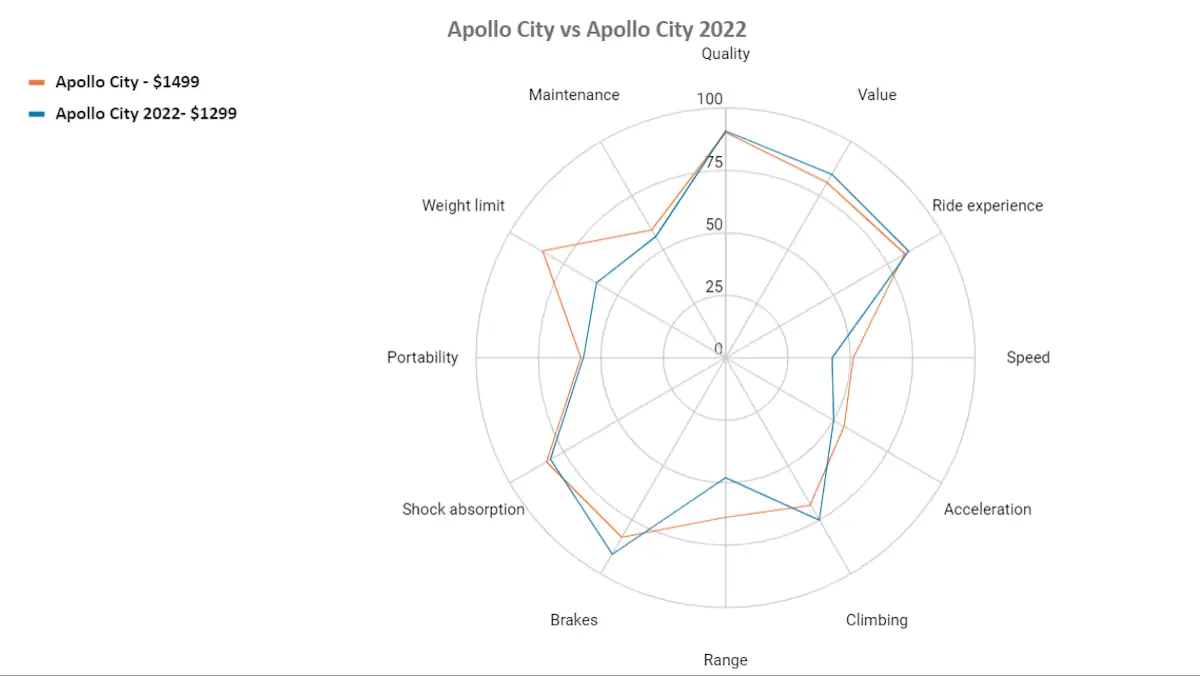
The Apollo City 2022 is the next version of the Apollo City model reviewed here.
The Apollo City and its 2022 counterpart may appear similar, but they cater to different preferences. The original Apollo City is a reliable, single-motor option for casual riders, prioritizing affordability and simplicity.
On the other hand, the Apollo City 2022 is a sleek, dual-motor powerhouse designed for thrill-seekers and tech-savvy urban explorers, boasting upgraded features and refined suspension for an exhilarating and connected ride.
If you want my opinion, I would choose the older version every time.
Build quality
Possibly one of the biggest selling points of this scooter, in my opinion, is the strong build quality.
The Apollo City shares engineering and design similarities with the Zero 9 scooter, both internally and externally.
The Apollo City incorporates the best parts of the Zero 9 with an added extensive quality assurance process. With a presence since the beginning of 2020, there’s ample data to gauge its lifespan.
The overwhelming majority of owners report absolutely no serious defects even after a year and a half of heavy use.
It’s probably too soon to talk about the general lifespan, but I strongly believe that most owners of the Apollo City will ride their scooters for at least 5 years, and probably a lot longer.
Features
The Apollo City is a true mid-price scooter, but it comes fully equipped and with as many features as the premium and luxury scooters.
Battery and charging
The Apollo City uses a battery from Dynavolt, a Chinese manufacturer that has made notable progress in recent years.
Although not on par with Samsung or LG, they produce reliable batteries for electric vehicles. The 48V, 13.2Ah lithium battery includes a smart battery management system (SBM) to prevent common issues like overcharging and short circuits.
The scooter takes 8 hours to charge fully with the regular charger, and just 4 hours with the fast charger. Keep in mind, however, that the fast charger may shorten the battery’s lifespan.
Brakes

The brakes of the Apollo City are one of my personal favorite features, and easily one of its strongest selling points.
The rear wheel features a low-maintenance drum brake, while the front wheel has a mechanical disc brake for a short stopping distance.
The scooter also includes an electronic braking system that regenerates the battery during braking.
With all of those brakes, the scooter achieves a very short stopping distance, officially 10.1 ft / 3.08 m. We can confidently say that the Apollo City is a very safe scooter.
Suspension

The Apollo City has suspension on both wheels, something that is not very common in scooters in this price range, and is not always found even in much more expensive scooters.
The front has a moderate-sized spring suspension between the stem and wheel, providing impact absorption during riding.
However, the real hero is the rear suspension setup with dual springs, which absorbs the majority of impact and vibration.
If you aren’t satisfied with this suspension, check out my guide on the best electric scooters with suspension.
Tires

The scooter comes with inner-tube air-filled tires, which are the type of tires that are the most susceptible to flats, but still, flats are not a very common occurrence with this scooter.
I didn’t have any flats, even though I rode the scooter on some challenging roads several times.
The tire diameter is 8.5 inches, which is the standard for commuter scooters. The tires come with the standard road treads, and are meant to be used in urban settings. The recommended tire pressure is 50 PSI.
Frame, deck, and stem
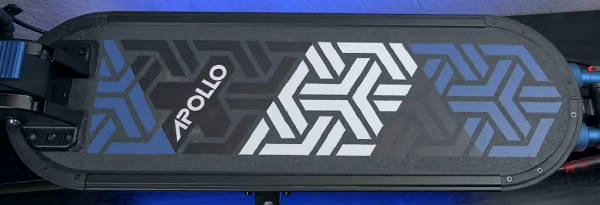
The scooter frame is crafted from forged aluminum, ensuring toughness and durability without excessive weight or brittleness. The Apollo City is frequently compared to the Zero 9, with the deck being one of their notable differences.
In fact, the deck of the Apollo City is quite easily recognizable because of its rounded corners and elliptical shape, which is a brilliant idea in my opinion, because when the corners of the deck are rectangular and too pronounced, they will do more damage to the objects you hit while carrying your scooter (and trust me, you will hit objects when carrying your scooter).
The kickstand, placed in the middle of the deck, provides stability when leaning on it. However, a slightly longer kickstand would be an improvement.
The Apollo City features an angled, almost rectangular-shaped stem, enhancing stability and aerodynamics compared to the typical cylindrical shape.
Lights

The Apollo City has lights practically all around.
The front has an LED strip along the stem and two deck lights serving as main headlights. While the deck lights may not provide long-range visibility, the LED strip supplements them and increases awareness in traffic.
Additional LED strips on the deck sides ensure visibility and enhance the scooter’s cool-blue appearance. The rear includes two red brake lights activated when braking.
Controls and screen

The round digital screen of the Apollo City will show you all the information that you need:
- current speed
- battery level (5 bars)
- trip distance and odometer
- gear
- light status
- error codes and alerts
The scooter accelerates with an index-finger throttle, and the control dashboard only has two buttons – the power and the mode buttons.
Both handlebars have a brake lever, with the right brake lever engaging the front brake, and the left one engaging the rear brake (you should always try to use the left one first, otherwise the scooter may tip forward when braking from higher speeds).
The left handlebar also features a bell.
App
For the time being, none of the Apollo scooters have Bluetooth features, and they can’t connect to an app.
Your next best choice is to check out the EScooterNerds Universal Scooter App.
This app doesn’t connect with the scooter either, but it will give you some additional helpful features, such as ready-made checklists for the common tasks you perform for your scooter, resources, and guides on the most important parts of responsible scooter ownership, calculators, tools, etc. The app is available for both iPhone and Android.
Portability, dimensions, and weight
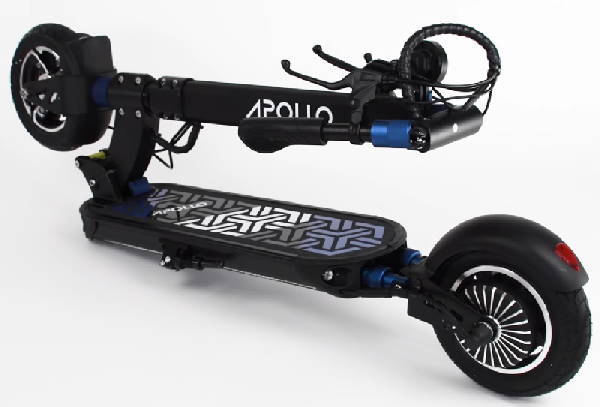
The Apollo City is a moderately portable scooter. Compared to other scooters with similar specs and with similar prices, it’s actually quite portable, but when compared to the lighter budget commuters, it’s a little bit heavier.
It weighs 39 lbs / 17.7 kg, which is about 7 lbs / 3 kg heavier than the typical budget commuter. That extra weight, however, is justified by the longer range and better performance.
The scooter has both an adjustable handlebar height, and foldable handlebars, making it occupy very little space when fully folded. Its folded dimensions are:
- length: 41.3 in / 105 cm
- width: 7.7 in / 19.5 cm
- height: 14 in / 35.4 cm
The scooter will easily fit in almost any car trunk, through bus or subway station doors, in tight hallways or elevators, and under your office desk.
If you prefer lighter and more portable scooters, check out my guide on the most portable electric scooters.
Weight limit
The official weight limit of the Apollo City is 265 lbs / 120 kg. Lots of heavier riders close to that limit have tested the scooter, and most of them report no noticeable drop in performance, and the scooter delivers the advertised specs or close to it.
If you are heavier than this weight limit, check out my guide on the best electric scooters for heavy riders.
Water resistance and riding in the rain
The official specifications have changed several times over the last year and a half, but the scooter is known to have an IP54 water protection rating, even though that spec seems to currently not be advertised.
A number of owners have used this scooter in wet environments, including moderate or even heavy rain, and have reported that the scooter has handled it without a beep.
However, keep in mind that IP54 means the scooter is protected from water splashes from all angles, but not stronger streams of water or protection against deep immersion, so do your best to stay out of the rain as much as possible.
Even if I don’t recommend driving in the rain, some of you won’t listen to me, so check out my guide on the best water-resistant electric scooters.
Security
The scooter has no key ignition system, and no built-in security feature. If you plan on leaving it outside often, I suggest getting a strong scooter lock, as thieves will instantly recognize this scooter and probably make it their target.
The best way to lock the scooter is to put the chain or the U-lock through either one of the suspension forks.
Accessories
You can find a wide range of accessories for the Apollo City at the Apollo store. The only thing that this scooter is missing right now is the option to support a seat.
Recommended gear
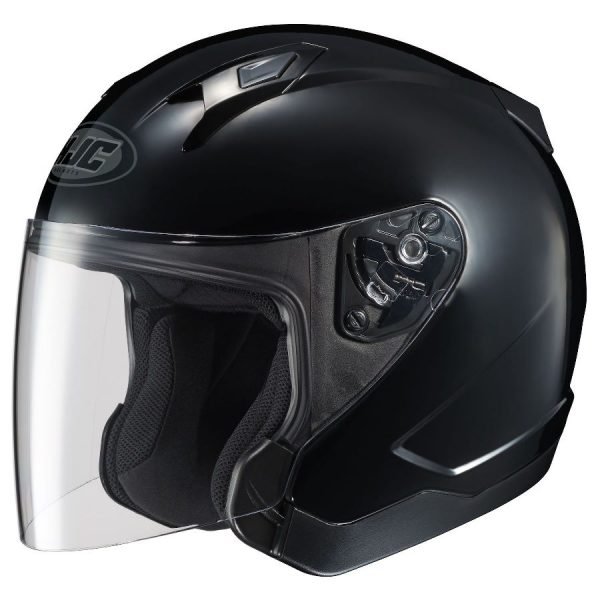
The only piece of gear you need for riding the Apollo City is a proper helmet for an electric scooter. I recommend a half-face helmet.
I consider every other piece of equipment to be optional. The scooter is not really that fast, so while you may want to get some knee and elbow pads, I don’t think there’s a need for a motorcycle armor or any other advanced safety gear.
Check out my guide on the best electric scooter accessories for some other smaller items that you may find interesting.
Upgrades and customizations
The scooter itself is fairly feature-complete, but I would recommend the following customizations to enhance your experience:
Problems and issues
The low number of breakdowns, the famous Apollo quality control process, and the tried-and-tested design and engineering the scooter employs, all make a very high-quality package. The scooter doesn’t really have any serious known issues that are dealbreakers.
One minor issue that several users were reporting a while ago was the incorrect battery readings on the screen. Only one owner has reported battery issues after very little use.
Another minor issue that one owner has reported has been the grip tape on the deck peeling off.
Those are all the known issues with this scooter, and they have only appeared in a handful of scenarios.
Verdict
The Apollo City scooter offers a versatile and excellent commuting experience with a balanced mix of quality, ride smoothness, safety, and performance.
Featuring a strong build with a forged aluminum frame, it stands out in terms of durability and toughness. Powered by a 600W hub BLDC motor, it reaches a top speed of 25 mph and offers a real-world range of 28 miles in eco mode.
The scooter features a reliable braking system, dual suspension for a smooth ride, and a comprehensive digital display.
I would recommend this scooter to every individual who is in search of an excellent commuter.

US: Apollo store (discount code: NE28PN5KFW for $50 in parts)
Canada: Apollo Canada store (discount code: NE28PN5KFW for $50 in parts)
UK, Europe: Ride And Glide

